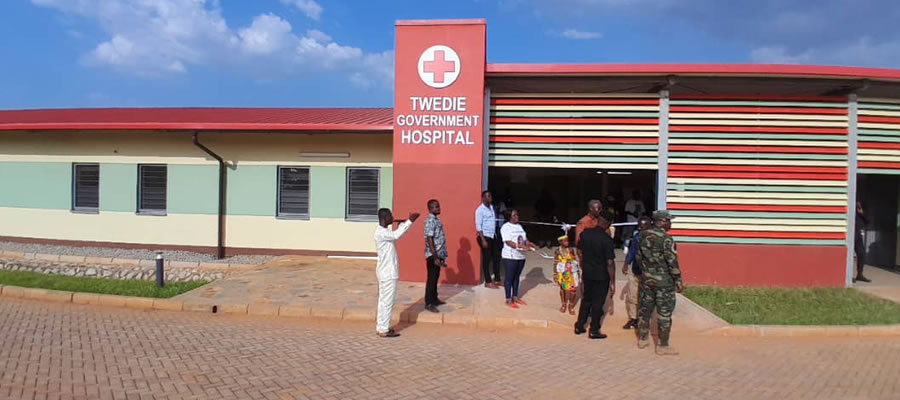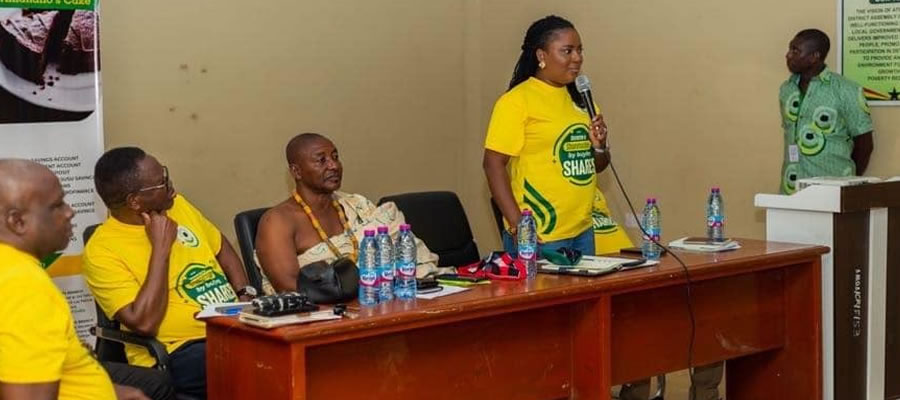

The school attendance profile for Atwima Kwanwoma District’s population 3 years and older is presented in Figure 3.2. Of the 82,266 persons aged 3 years and above, 45.1 percent had attended school in the past or were in school, with 42.3 percent being in school at the time of the census while 12.6 percent have never attended school. Females were less likely to have attended school in the past than males: 43.7 percent for females and 46.7 percent for males.
Meanwhile, females who have never attended school are twice (16.7%) their male counterparts (8.2%).
Table 3.10 provides information on population 3 years and older by school attendance, level of education and by sex in Atwima Kwanwoma District. The table indicates that of the total population in the district, 34,760 persons aged three years and older are currently attending school, whereas 37,133 have attended school in the past. For those who are currently in school, close to half (47.2%) are in primary school, 18.6 percent are in JSS/JHS, 8.5 percent are in SSS/SHS, while 1.8 percent are in tertiary institutions. Considering the proportion of those at the Basic level defined to include Primary and JHS, (65.8 %), there will be pressure on the Administrators of Second Cycle institutions in the District to provide facilities to cater for the number in the next few years.
It is further revealed that for those who had attended school previously almost 8 out of 10 (78.5%) attended up to basic school level (primary, JSS/JHS and middle) while 14.7 percent attended SSS/SHS and secondary school. The proportion who attended vocational/technical/ commercial constitutes 2.4 percent while post middle/secondary is 1.7 percent. In addition, 4.7 percent attended tertiary institutions. Also, more females 78.3 percent than males 74.5 percent attended basic level schools. However, males outnumber females at the SSS/SHS/Secondary level (14.9% males and 10.4% females). In addition, more males, 6.3 percent than females, 3.1 percent attained tertiary level of education.
Literacy and Education
Education is an important aspect of societal development. It is the process of acquiring knowledge, skills, values and attitudes to fully develop individual capacities for societal well-being. There is a relationship between education, human resource development and economic growth (United Nations Development Programme, 2011). Literacy on the other hand refers to a person’s ability to read and write in any language. In the 2010 census, a person was considered literate if he/she could read, write, and understand a simple statement in any language.
Literacy
Table 3.9 presents information on the population 11 years and older who are literate in at least one language and those who are not literate in any language at all. From the total population, 70.6 percent of the people are literate in English and a Ghanaian Language, 13.1 percent literate in English only and 15.1 percent Ghanaian Language only. Less than one percent of the people can read and write French in Atwima Kwanwoma.
More males (74.8%) than females (66.2%) for all the age groups are literate in English and Ghanaian language. However more females than males are literate in English and only 14.2 percent and Ghanaian language only, 18.6 percent only according to Table 3.9.
Date Created : 11/23/2017 7:01:54 AM












 facebook
facebook
 twitter
twitter
 Youtube
Youtube
 +233 593 831 280
+233 593 831 280 0800 430 430
0800 430 430 GPS: GE-231-4383
GPS: GE-231-4383 info@ghanadistricts.com
info@ghanadistricts.com Box GP1044, Accra, Ghana
Box GP1044, Accra, Ghana